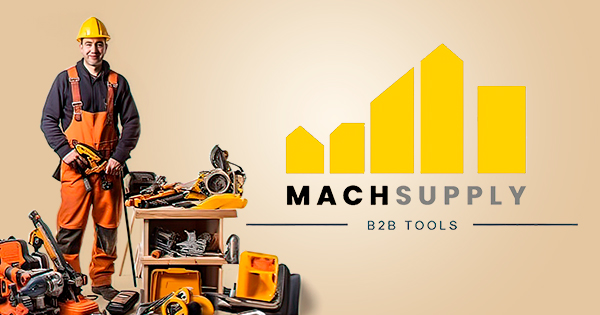Awareness – a guide to make users discover your brand
This is the first article of our growth marketing series based on the popular AAARRR or pirate funnel. This framework will help you better understand user behaviour, from the very first stage of the buying journey (awareness) and data gathering and testing (acquisition) to spurring a user into action (activation), choosing retention strategies and the right revenue model and, finally, how to drive referrals. This article will share tips on how to reach the right target audiences and build a lasting impression of your brand.

Let’s face it, the volume of people you reach is vital to driving sales. The goal of awareness is brand awareness (surprise!), but it is also much more than that. It’s what gets people to become aware of your brand, service or product. It’s what makes them visit your website in an organic way.
It’s what gets your brand to top of mind when someone is looking for a specific product or service. Awareness is the first real step in the product lifecycle and the starting point of the AAARRR funnel. Never heard of it? We’ll cover that in depth throughout this series of articles.
Playing Lego. Drinking Coke. Wearing Birkenstocks. Eating a Whopper. Riding a Vespa. Bingeing Netflix.
How do you know that your brand has truly made it? It becomes a verb or noun (you don’t search for something on the internet, you Google it!). The verbification or nounification of brands (officially called Anthimeria) is a sure-fire way to know that there’s no shortage of awareness around your brand. If, however, you’re not in the top 25 most well-known brands in the world, there are many proven ways to increase awareness – and we’re here to help you find your way. Read on to (re)discover what awareness is and let us guide you through helpful tactics to deploy and advise on how to measure it.
What is brand awareness?
Fact: When audiences are more familiar with your logo, messaging, and products, you’ll have a greater chance of making sales and become top of mind for them. Brand awareness is a measure of how well consumers recognise and remember your business (and its product or service). When a brand has a high level of awareness in the market and reaches ‘thought leader’ status, its marketing and advertising campaigns elicit feelings and emotions from consumers. But bear in mind that the concept of brand awareness touches on more than just one KPI and therefore needs to be approached with the bigger picture in mind.
Why is it important?
Because when consumers are aware of your brand, they often learn more about your business and actively seek out information about it and what it stands for. No matter how much you spend on advertising, or how good your products and services are, your business isn’t likely to get very far if it doesn’t have a brand. Your brand is the aspect of businesses that consumers come to trust and resonate with. And the more familiar your users are with your brand, the easier it will be for you to promote it across different channels, introduce new products or services, build a solid reputation and find and retain loyal customers.
Brand awareness paves the way for reaching your marketing KPIs. Finding ways to increase it for your brand so you become top of mind for consumers is therefore a journey to embark on with an open mind and a willingness to accept that there is no one-size-fits-all approach.
Using digital marketing to increase awareness
Getting people to become aware of your brand, product or service and/or visit your website is the first real step in the product lifecycle. According to the latest statistics from DataReportal, the average global internet user now spends 6 hours and 37 minutes online each day. This means that having a digital-first approach is paramount in your awareness strategy. So, where should you focus your digital marketing efforts to build or increase awareness of your product or service?
Tactics to improve awareness
Walk your brand’s talk
Improving awareness starts with building a recognisable brand that tells a story that is aligned with your brand’s values as well as your audience’s. From your logo, tagline, how it all started, to your brand’s tone of voice and visual identity – honing these elements will get you far in terms of memorability and shareability once you start putting your brand out there.
When it comes to walking the talk, it will be tough for any business to beat Patagonia, whose Founder donated the entire company to fight climate change this year. And while you’re certainly not expected to go to Patagonia-level lengths when it comes to building a brand that resonates with your audience– it shows that the sky truly is the limit and that a brand can never be too ambitious.
See the value of added value
Blogs, podcasts, films, education, freebies, rewards programmes – creating value for audiences that goes beyond your product or service is key to creating awareness for your brand. These are all amazing entry points to establish first contact with a potential user or customer. The value of word-of-mouth and virality (user-generated growth) is also not to be underestimated in creating awareness. Harness the power of the creator economy by making sure your product or service offers value in all senses of the word – and watch the word spread. Adding value to increase awareness will also pay off in the long run, which we’ll discuss in more detail further down the growth marketing funnel.
Advertise, advertise, advertise
Maintaining an edge over your competitors relies heavily on visibility, and that means advertising. Advertising spans from native advertising campaigns and running ads on social media to sponsoring events and teaming up with influencers to promote your product or service. Deciding how you advertise to increase awareness will be determined by your ad spend budget. You can only spend what you have, so plan your advertising budget accordingly, be clear what your objectives are from the start and stick to them when allocating ad spend so you can measure the results later without feeling overwhelmed.
How can you measure awareness?
Once you’ve decided which tactics to use, you’ll want to measure them to see what works and what doesn’t. There are many ways to measure awareness, and how you do it will depend on your awareness strategy. If you’re looking to measure brand awareness via native advertising, for example, you will track your impressions, reach, click-through rates, and website traffic. There are many advanced and user-friendly tracking platforms for this such as Google Analytics, Adobe Analytics and Hootsuite for social media.
Awareness in action
The list of excellent examples of brand awareness campaigns is long, so we’ve narrowed it down to three examples of how we helped clients increase awareness based on their objectives for inspiration.
KitchenAid’s social platforms are brilliant examples of how a long-term investment in social media truly does pay off. They serve as playful hangouts that help fans become better cooks, sparks joy and gives them a sense of belonging. The result? Engagement with their users went up by +67.2% yoy!
Västerbottensost a Swedish cheese brand and proud of it. They created a sharable content with their Swedish Carbonara campaign, which consisted in trolling Italians and challenging carbonara purists – an excellent example of creating content that fans (non-fans) and the media would be prone to sharing.
Whirlpool’s wellness hub springs from their ethos that wellness begins at home. Their appliances are created to sense and adapt to your needs, and this value-added blog supports that with articles and inspiration around topics like me-time, a healthy lifestyle, recipes and more that aims to educate and inspire like-minded users.
Next up
What’s next in the series? We look at Acquisition and the magic of A/B testing.
Our recent blog posts
See all blogs-
How is AI’s synthetic data enhancing User Experience Research? Technology

-
Web3.AI Rising : How new technology can add value to your business

-
How generative AI helped us create an e-commerce app – with personalised content – in just 2 weeks Technology

-
Can you build a foodie app in 3 days using Generative AI? (Spoiler alert: yes!)

